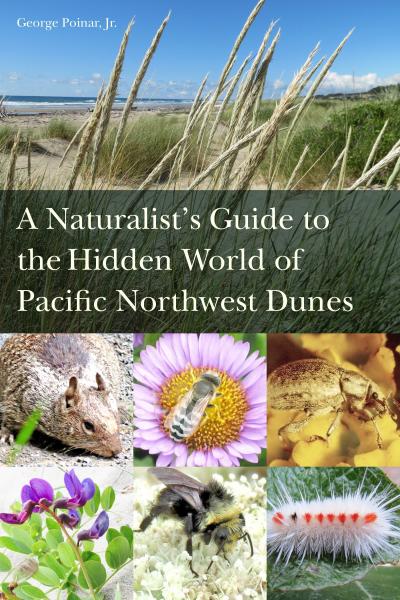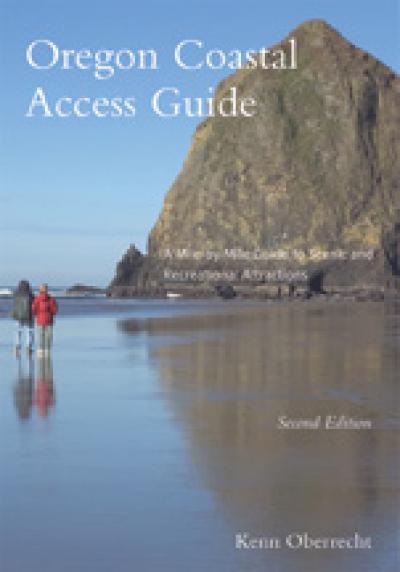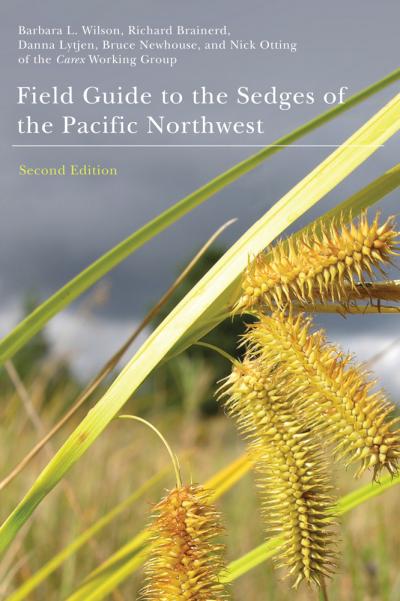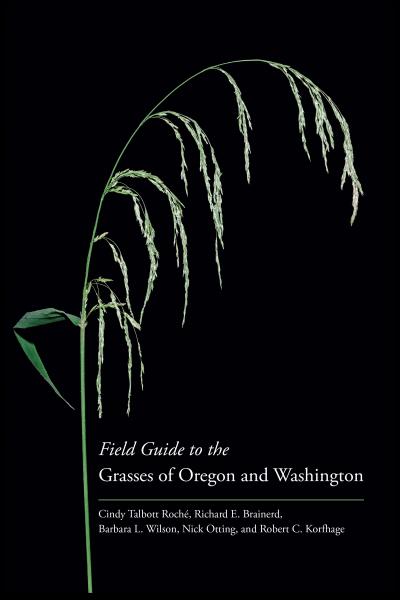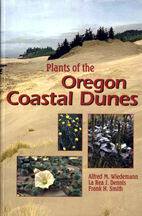
Plants of the Oregon Coastal Dunes
La Rea J. Dennis, Frank H. Smith, and Alfred M. Wiedemann
Plants of the Oregon Coastal Dunes offers a useful, informative guide for visitors to the Oregon Dunes National Recreation Area or anyone spending time on the state's remarkable beaches.
The standard reference on the Oregon dunes for thirty years, this handy guide identifies those plants most likely encountered and serves as a general introduction to the ecology of dune areas. The first two sections explain the natural history of dunes and describe plant communities associated with dunes and how they change over time. The final section provides an easy-to-use key to 90 common dune plants. Each species profile includes a photograph, a detailed description, and information on habitat and range.
This new edition considers changes in dune areas in recent decades, notes conservation efforts, and updates scientific names.
About the author
La Rea J. Dennis has been studying Pacific northwest plants for more than 40 years. She is retired Assistant Curator of the Herbarium at Oregon State University and the co-author of Plants of the Oregon Coastal Dunes (OSU Press), among other publications.
Read more about this author
Frank H. Smith was a professor of botany at Oregon State University.
Read more about this author
Alfred M. Wiedemann, a leading authority on the ecology of Pacific Northwest coastal dunes, is on the faculty of The Evergreen State College in Olympia, Washington.
Read more about this author
- Introduction
- The Oregon Coastal Dunes
- Geology
- Climate
- The Dune Landscape
- Sand Activity
- Vegetation History
- Plant Communities and Plant Succession
- Plant Communities of The Sand Dunes
- Sand Dune Stabilization Plantings
- Identification of Sand Dune Plants
- Description of Sand Dune Plants
- Ferns
- Club-mosses
- Conifers
- Flowering Plants
- Glossary
- Index to Common and Scientific Names
This book was originally published in 1969 and has, for nearly 30 years, served as a guide to the natural history of the Oregon coastal dunes and to the plants found on them. In this edition we have updated the scientific names of the plant species to correspond with those in current use in local floras.
During these past thirty years changes have occurred in the dune landscape. The deflation plains, developing on the lee side of the foredune and between the lateral ridges of the large parabola dunes, were vegetated mostly by meadow species, with a few tree and shrub seedlings. Today impassable thickets of trees, coast pine (Pinus contorta) and Sitka spruce (Picea sitchensis) and shrubs western wax myrtle (Myrica californica), coast willow (Salix hookeriana) and evergreen huckleberry (Vaccinium ovatum) have grown up, requiring trails to be cut for access to the beach.
On the foredune and other areas of active, blowing sand, the continued spread of European beach-grass (Ammophila arenaria) has resulted in the suppression of the native dune-building and stand-stabilizing species. While not generally threatened with extinction, many of these species, such as the yellow abronia (Abronia latifolia), gray beach pea (Lathyrus littoralis), beach morning-glory (Calystegia soldanella), American dune-grass (Elumus mollis)and large-headed sedge (Carex macrocephala) are no longer seen in the abundance of thirty years ago. One endangered species pink sandverbena (Abronia umbellata ssp. breviflora) which was once abundant along the coast from British Columbia to northern California is now restricted to a few sites from the central Oregon coast south. Since 1991 efforts have been underway by the Plant Conservation Biology Program of the Oregon Department of Agriculture to reintroduce this species to create new populations. Reintroduction has been most successful in sites where European Beach-grass has been brought under control.
Control of European beach-grass has been undertaken, with some success, in certain areas to improve the habitat for an endangered bird, the snowy plover (Charadrius alexandrinus ssp. nivosus). In addition, biological control agents (primarily seed weevils and the Gorse Spider mite) have been introduced by the Oregon Department of Agriculture in cooperation with other agencies and private land owners to help control the spread of gorse (Ulex europaea) and Scotch broom (Cytisus scoparius)
The main purpose of this book is to help visitors to the sand dunes, regardless of their background, to become a little more familiar with the landscape they see, and with the forces of nature operating within that landscape. A great deal of satisfaction can be obtained through knowing something of the story behind the things one sees in nature: the effect of climate, why plants grow where they do, the names of the plants, etc.
The sand dunes of the Oregon coast offer some of the most spectacular seashore landscapes to be found anywhere in the country. Readily accessible by highway, they have become a source of interest to increasing numbers of travelers to the Northwest. Oregon's excellent State Park system and the establishment of the Oregon Dunes National Recreation Area (ODNRA) also draw large numbers of visitors to the dunes areas.
The first chapter of this book deals with the sand dune area as a whole--its geologic history, climate, dune forms and formation of dunes, and some general observations on the vegetation. Much of this information was put together from many sources, and numbers in parentheses throughout the text refer to a bibliography which lists the major sources of information.
The next four chapters discuss the plants and plant communities of the sand dunes. The information is based largely on the dune areas from Tillamook Head to Coos Bay. Many plants of the Clatsop area dune ridges are included, but this area has many additional species that have been introduced by the activities of man. Likewise, the coast below Coos Bay has a slightly different climate from that of the rest of the Oregon coast, and consequently there are many additional plant species present.
The plants included in this book are only those that might be considered common on the dunes. It does not include at least as many more that are less common. It does not include roadside plants of the "non-dune" coastal forest, except when these occur on the dunes.
Common names are used in the discussion with the scientific name given in parentheses the first time it is used in a chapter. Whenever possible, it is desirable to learn the scientific names of plants, since common names can be a source of much confusion.
The taxonomic key of Chapter 6 includes ninety of the plants one is most likely to see on the sand dunes. Instructions for its use precede the actual key. In addition to the plants in the key, forty other species are described in the description section. Identifying characteristics are based on flowers and leaves, which would make it most useful during the spring and summer months. However, the key, together with the photographs and descriptions of the plants in Chapter 7, should make it possible to identify many of these species throughout the year. Mosses and lichens are not included in the key. A glossary is included that gives definitions of commonly used botanical terms.
A number of individuals assisted in the preparation of this work; namely, Kenton L. Chambers, William W. Chilcote, Ronald J. Tyrl, the late Weldon K. Johnston, Richard R. Halse and Thomas N. Kaye. We wish to thank them for their valuable assistance.
The photographs were taken by the late Frank H. Smith, with the exception of Ceanothus thyrsiflorus (blue blossom), which was kindly furnished to us by Mr. and Mrs. Orin Hess of Wedderburn, Oregon.

